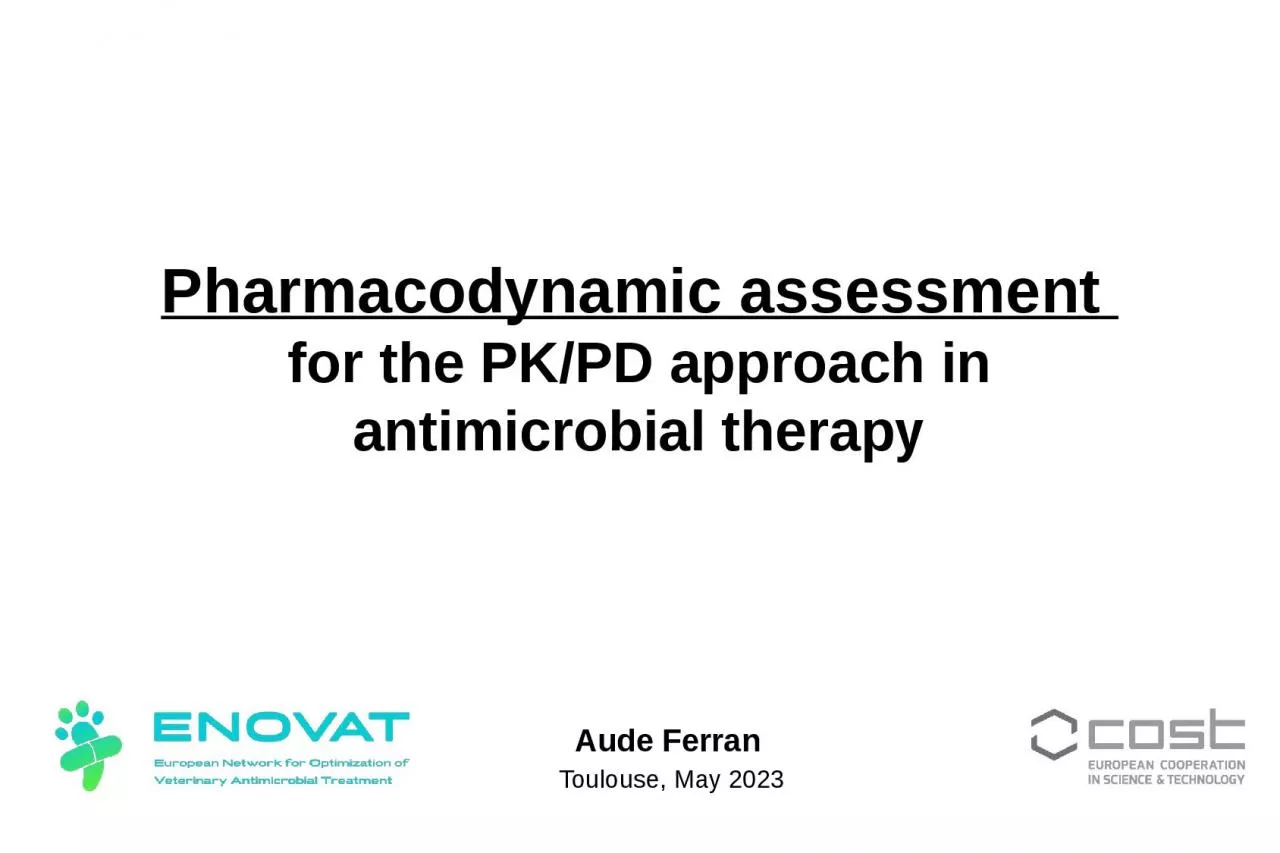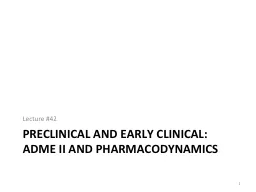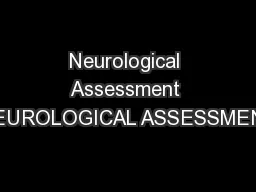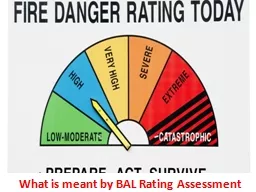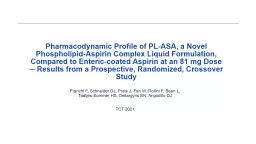PPT-Pharmacodynamic assessment
Author : sylvia | Published Date : 2024-01-03
for the PKPD approach in antimicrobial therapy Aude Ferran Toulouse May 2023 Indicators of the effect of antibiotics on bacteria In vitro MIC Minimal Inhibitory
Presentation Embed Code
Download Presentation
Download Presentation The PPT/PDF document "Pharmacodynamic assessment" is the property of its rightful owner. Permission is granted to download and print the materials on this website for personal, non-commercial use only, and to display it on your personal computer provided you do not modify the materials and that you retain all copyright notices contained in the materials. By downloading content from our website, you accept the terms of this agreement.
Pharmacodynamic assessment: Transcript
Download Rules Of Document
"Pharmacodynamic assessment"The content belongs to its owner. You may download and print it for personal use, without modification, and keep all copyright notices. By downloading, you agree to these terms.
Related Documents

